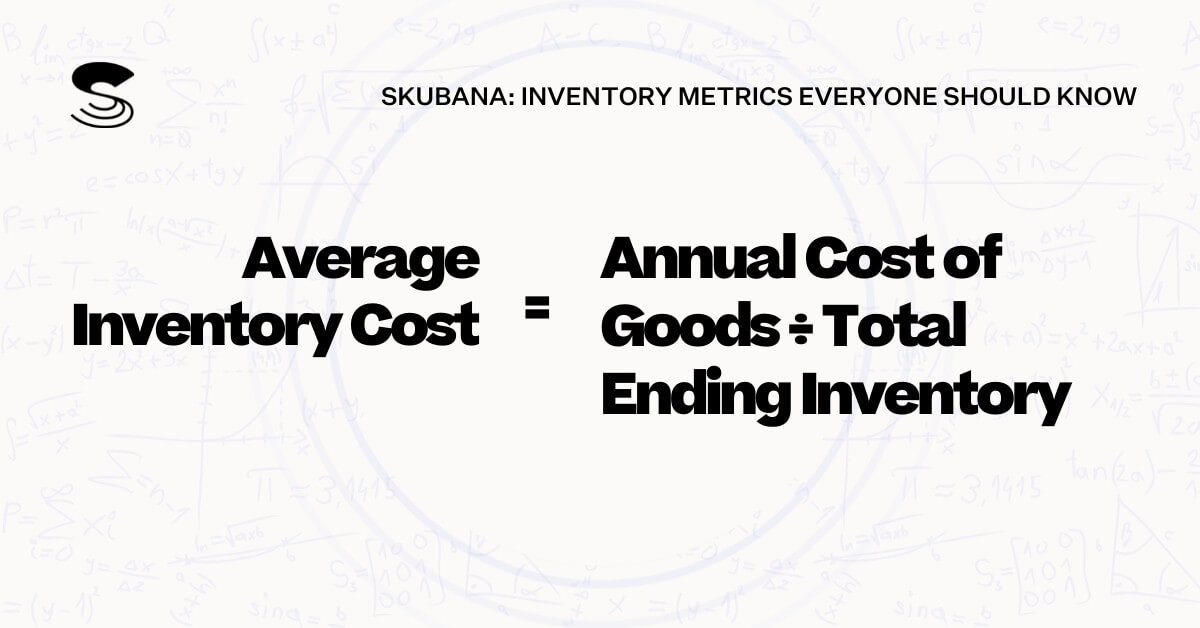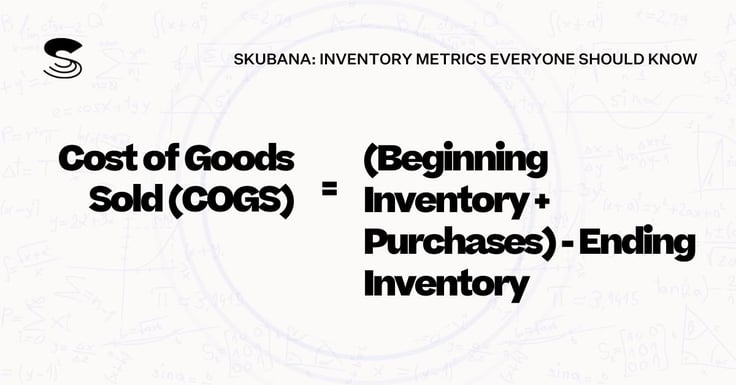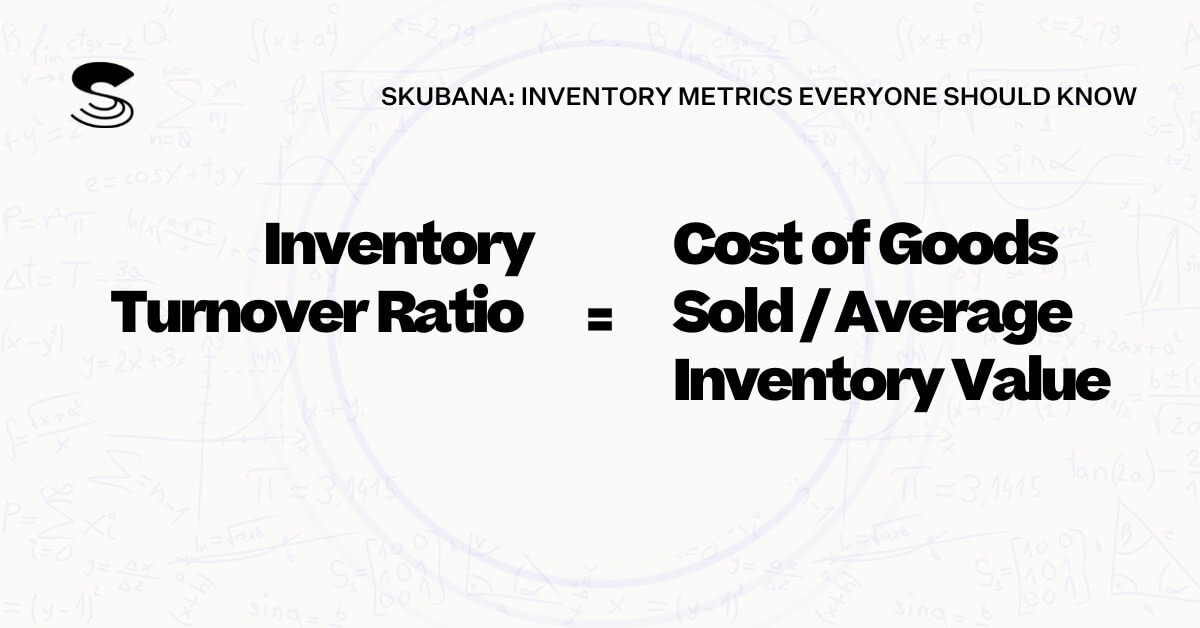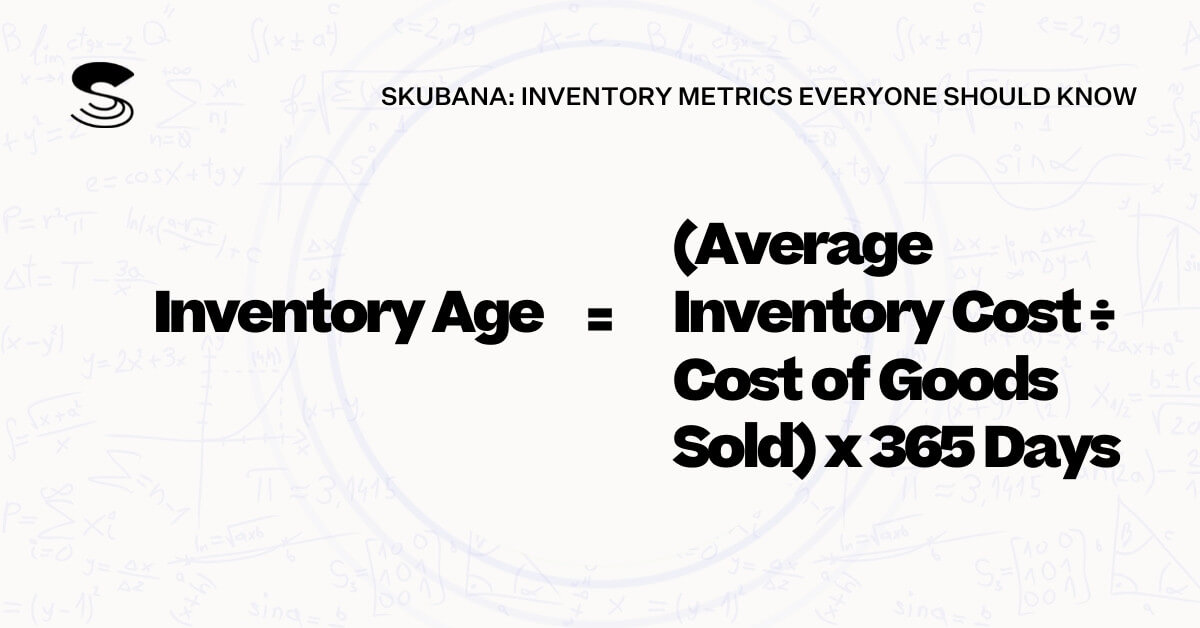Being a business owner is never more enjoyable than when your products are flying off the shelves, and you have enough available inventory to accurately fulfill every order. But what happens when your SKUs start collecting dust? Stagnant, excess inventory can cause serious issues, from mounting storage costs to diminished profit margins. And yet, there’s a viable solution to avoid the traps of unmoved inventory and keep your cash flowing: aging inventory.
Aging inventory is a popular metric among product-based brands, because it offers exceptional visibility into your stock and allows you to make inventory adjustments as needed. Read on to learn more about the importance of calculating aging inventory, and how this method can enhance your entire inventory management strategy.
What is aging inventory?
Aging inventory is a term for goods that haven’t sold quickly or haven't sold for their suggested retail price. Retailers track aging inventory because once an item has reached its threshold and remains unsold (i.e. after six or more months), that merchandise likely needs to be marked down to clear out your dead stock and bring in new products. Generally speaking, the faster a brand can sell through its inventory, the greater its potential for profitability.
How to calculate average inventory age for your business?

Calculating average inventory age is an important part of inventory management, as this knowledge helps you shine a light on inventory inefficiencies and/or lost profits. To work out inventory age for your own product listings, you’ll need to know your average inventory cost, cost of goods sold (COGS), as well as your inventory turnover ratio (ITR).
Know your average inventory cost
Average inventory estimates the amount (or value) of a companies inventory over a specific time period. While inventory balances can fluctuate significantly — depending on seasonality, when shipments are received, and so on — an average cost calculation evens out these sudden spikes in either direction, and serves as a reasonable indicator of inventory valuation.

To calculate your average inventory cost, use the formula: average inventory cost = [annual cost of goods sold ÷ total ending inventory]. Having a good grasp on these numbers can be empowering for ecommerce businesses of all sizes, as they reveal whether the amount of inventory you’re carrying has actually become a detriment to your bottom line.
Know your cost of goods sold
Cost of goods sold refers to the price of producing the goods sold by a brand or business. The COGS amount includes expenses directly related to production (like raw materials and cost of labor), but it excludes a range of indirect expenses (like overhead and marketing).

The COGS formula is as follows: cost of goods sold = [beginning inventory + purchases during period] – ending inventory. Here, the beginning inventory is the amount of inventory leftover from the previous period (month, quarter, etc). As its name suggests, purchases during the period points to the cost of what you purchased within the designated accounting period. Lastly, ending inventory is whatever didn’t sell during that same time period.
Know your inventory turnover ratio
Inventory turnover ratio is an expression of how often a company sold and replaced its inventory during an established period of time (like over the course of a year, for example). Calculating inventory turnover can help ecommerce businesses make more informed decisions on pricing, marketing, manufacturing, and purchasing new inventory items.

The inventory turnover formula is: inventory turnover ratio = [cost of goods sold ÷ average inventory during period]. A slow turnover rate might imply weak sales or a large volume of excess inventory, whereas a faster ratio likely signifies strong sales or insufficient inventory levels. Either way, ITR is an important tool for analyzing areas of inventory improvement.
Divide by # of days
Your inventory’s age reflects the average number of days it takes to sell off certain SKUs. For that reason, analysts often utilize this measure to determine the efficiency of a company’s sales. On occasion, the average age of inventory is also referred to as days sales in inventory (DSI).

To find inventory age for your own products, follow the formula: average inventory age = [average inventory cost ÷ cost of goods sold] x 365. In general, it’s recommended that retailers confirm this figure with supplemental inventory metrics (such as gross profit margin).
Inventory aging analysis and business health

Leveraging the inventory aging formula and/or an inventory aging report is vital to your business's health and wealth. That’s because an inventory aging analysis is a powerful resource designed to improve your storage cost efficiency, optimize your inventory control strategy, minimize excess inventory, and maximize your cashflow at the same time.
Improve storage cost efficiency
Unfortunately, inventory holding and carrying costs don’t seem to be scaling back any time soon. But the good news is, aging analysis can help your company avoid long-term storage fees — therefore improving cost efficiency in a big way. Aged inventory reporting provides details on how long products have been in stock, so you can craft a plan to get them out the door.
This is particularly beneficial for any brands who use FBA or 3PL warehouses, since both options implement a significant upcharge if your products are kept on hand for too long.
Optimize your inventory control strategy
Inventory control is rooted in overseeing the supply, storage, management, and distribution of your stock. Typically, inventory control and warehouse management includes techniques to prevent overselling, stockouts, and delays within your replenishment schedule. And when you incorporate aging inventory calculations with said techniques, you can easily optimize your inventory control strategy.
That’s because a thoughtful, thorough aging analysis ensures you know exactly what you have in stock at any time, and delivers the information you need to raise your inventory turnover (i.e. less product expiration, spoilage, obsolescence, etc.).
Minimize excess inventory
Excess inventory relates to goods that have reached the end of their product life cycle, but have yet to be sold (and now exceed their projected demand). Simply put, storing excess inventory is bad for business; not only does a product surplus signal ineffective inventory management, but it’s bound to have a negative impact on your revenue, as well.
Fortunately, by paying attention to aged inventory, your company can stop reordering the same products that don’t sell — and instead, develop an approach for eliminating all your dead stock.
This way, you can introduce new items that’ll drive customer orders and notable financial gains.
Maximize your cashflow
Maximizing your cashflow will always be a priority, because it’s your revenue stream that’s really keeping your company afloat (and that’s the money you use to purchase more products). In the event your brand has too much cash tied up in stagnant SKUs, there’s a good chance it’ll cause issues with your inventory and prevent you from investing in fresh merchandise.
But thanks to aging inventory calculations, retailers can pinpoint exactly which items are incurring greater carrying costs or holding fees as they remain unsold. From there, business owners can more easily get rid of aged stock to make sure their cashflow is unimpeded.
How to use inventory age to inform your inventory management strategy

To help your inventory management strategy excel, you’ll need to bring in a variety of software and technologies, in addition to comprehensive analytics and reporting. While trial and error will inevitably be involved in finding the right inventory tools for your business, integrating inventory age has been known to benefit brands across all industries.
Use inventory age to adapt your inventory management strategy
Without an effective inventory management strategy, your company runs the risk of frustrating its customers, losing vital sales, or housing inventory that just doesn’t sell. But inventory age can give a huge boost to your existing management approach, and help you to make necessary pivots with your products (that may have otherwise gone unrecognized or unresolved).
Use inventory age to understand demand trends
Demand trends tell you how well a product performs by honing in on fluctuations in consumer demand and buying patterns from your customer base. Perhaps you had a product that sold well for the first six months after its release, but it hardly moved any units in the second half of the year. Inventory age often suggests whether an item might prevail with a seasonal promotion, a substantial discount, or being sold in a product bundle.
Use inventory age to inform planning
Inventory planning is integral to supply chain management, because it helps stores purchase the ideal amount of stock and determine how often to reorder. Inventory age can largely inform inventory planning, in that it acknowledges which products don’t merit reordering after all. Likewise, inventory age gives your planning a more solid structure, since you have a road map to work from and can remove a lot of the guesswork associated with this process.
Use inventory age to make data-driven sales decisions
Making data-driven sales decisions is all about using the insights and information available to you from inventory reporting. With this info at your disposal, you can avoid marking down items on a whim — or worse yet, reordering a product without knowing the quantity you already have in stock. These sorts of rash inventory transactions can be quite detrimental long-term, especially for small businesses just starting out on their ecommerce journey.








